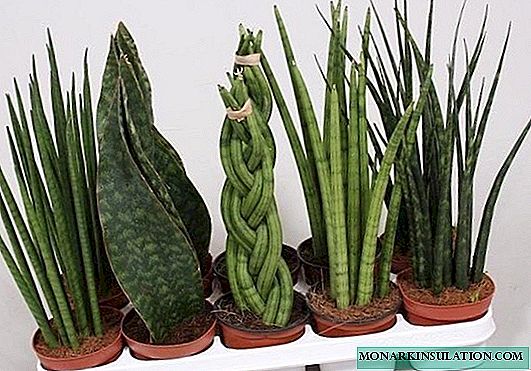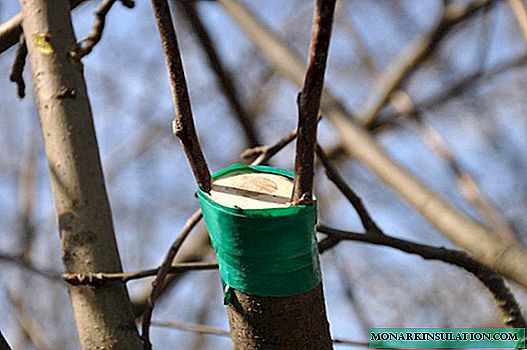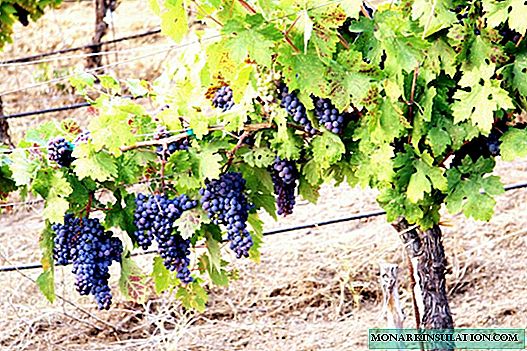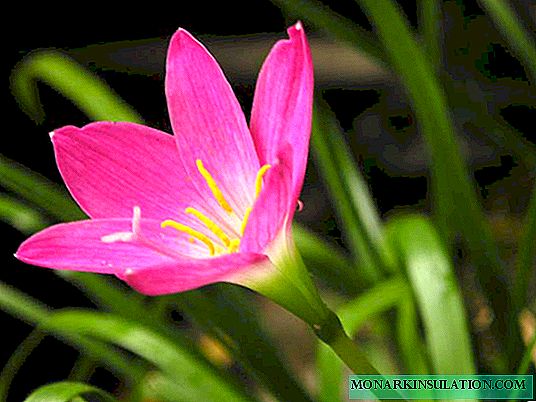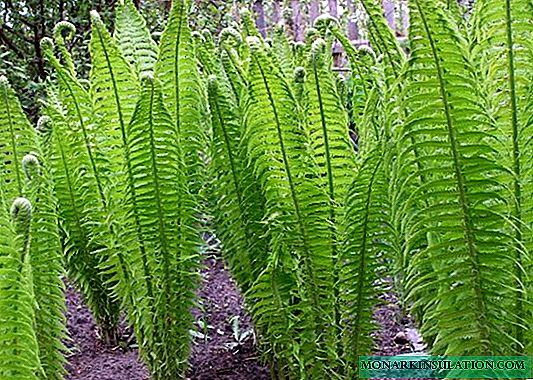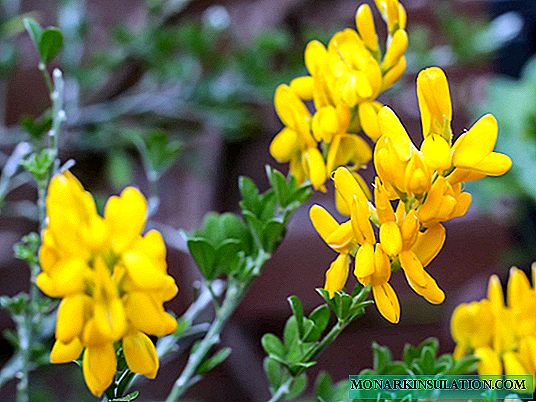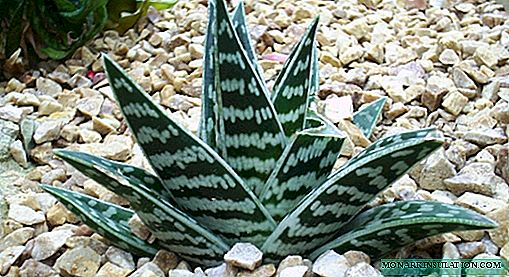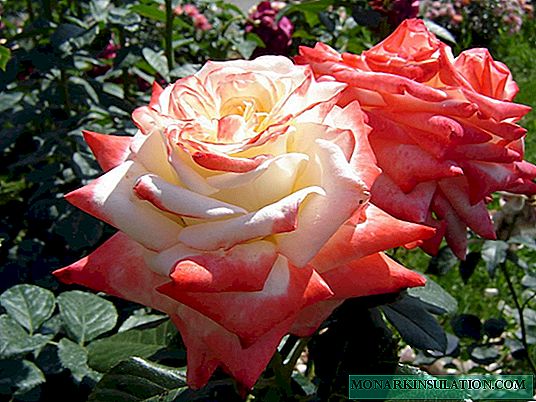Phlox Drummond - an annual herb from the genus Phlox, family Sinyukhovye. His homeland is the southwestern United States, Mexico. Decorative flower is widely used by flower growers due to the unpretentiousness and bright lush flowers of various palettes. Translated from Greek means "fire." Introduced to Europe by the English botanist Drummond.
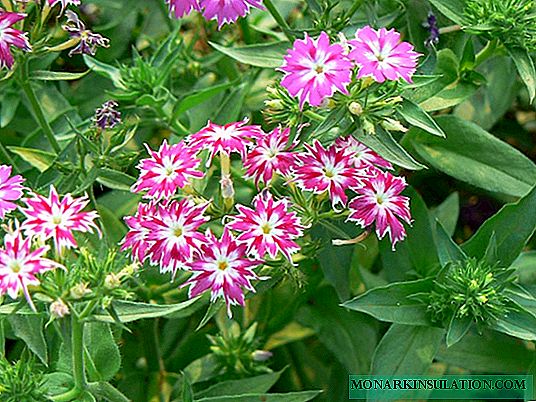
Description of Phlox Drummond
Drummond phlox reaches a height of not more than 50 cm, the stems are erect, branched, pubescent. The leaf plates are elongated, obovate, lanceolate, cut at the edges, pointed. Inflorescences are corymbose or umbrella, bloom from June to October.
The color of the flowers is white, dark red, blue, and purple. Each bud falls in a week, but new ones blossom. The roots are superficial, poorly developed.

Popular varieties of Phlox Drummond
Varieties are dwarf (no more than 20 cm), tetraploid (large flowers), star-shaped (petals with fringe).
| Varieties | Description | Flowers |
| star Rain | Annual, stems thin, straight, branched. Drought-resistant, tolerates frosts. | Star shaped, purple, lilac, pink. |
| Buttons | Well-defined branches, suitable for cultivation in the south, tolerates heat. | At the base of the petal is a peephole. The palette is pink, blue, scarlet. |
| Chanel | Low, up to 20 cm. | Terry, peach. |
| Constellation | Lush, up to 50 cm, with pubescent leaves and corymbose inflorescences. Popular for bouquets. | Bright red, 3 cm in diameter with a pleasant aroma. |
| Terry | Up to 30 cm, decorates loggias, balconies. | Cream, red. |
| Grandiflora | Frost-resistant, large. | In diameter 4 cm, different colors. |
| Flickering star | 25 cm high. Blooms until cold autumn. | Like snowflakes in pointed edges. The color is white, pink. |
| Promis | Terry, up to 30 cm, adorns stony hills, flower beds. | Large, blue, purple, pink. |
| Pretty woman in raspberry | Bushes spherical up to 30 cm, not afraid of cold, temperature changes. | Raspberry |
| Tapestry | Tall, up to 45 cm. | In the middle, dark petals (cherry, burgundy) are light at the edges. |
| Beauty | Up to 25-30 cm. | Small, white, fragrant. |
| bird's milk | Mini bush up to 15 cm, blooms profusely and for a long time. | Terry, cream, vanilla color. |
| Leopold | Inflorescences up to 3 cm in diameter, on a high stalk. Resistant to cold. | Coral petals, white in the center. |
| Kaleidoscope | Small, decorates the borders. | Mix of different shades. |
| Alluring star | Up to 40 cm, umbellate inflorescences. | Small, fragrant, pink, raspberry, purple, white. |
| Blue sky | Dwarf up to 15 cm. | Large, 3 cm in diameter, bright blue, white in the middle. |
| Blue velvet | Maximum up to 30 cm with pointed leaves. | Large, terry, bright purple, blue. |
| Scarlett | Blooms profusely, resistant to disease, up to 25 cm. | Scarlet, pink, terry. |
| Ethnie | Intensively branching, up to 15 cm. | Half terry, pastel colors. |
| Vernissage | Up to 40 cm, large-flowered, looks spectacular in flowerpots, on balconies. | Large, fragrant, white, purple, red. |
| Fair mix | Up to 15-20 cm high with corymbose inflorescences, loves sunny places. | Terry, different palettes. |
| Cecilia | The bush is branching, in the form of a ball up to 30 cm. | Blue, pink, blue. |
| Caramel | Up to 60 cm high, used in bouquets. | Creamy yellow, cherry in the center. |
| Ferdinand | Grows to 45 cm with dense inflorescences. | Bright red, fragrant. |
Growing Phlox Drummond from seeds
Seeds are bought or harvested from a matured box. The dried, but not cracked fruits are ground, the garbage is sifted.

In early May, the seed is sown in open ground, light, fertile, with a low level of acidity. If necessary, add organic matter, sand, peat. The soil surface is loosened, grooves are made, maintaining a distance of 20 cm, watered. When the water is absorbed, spread 2-3 pieces after 15 cm, sprinkle, moisturize. Shelter with lutrabsil, periodically lift and moisturize as necessary. Two weeks after sowing, shoots will appear and the shelter is removed. The soil is loosened, weak seedlings are removed, fed with liquid nitrogen. Complex mixtures contribute to the formation of flower buds. When grown from seeds, it will bloom in July.
Feeding is allowed in November, December, and phlox will sprout in April. Even if there is snow, they clear it and scatter seeds, sprinkle dry soil on top, cover it with spruce branches. In May, planted on a flower bed.
Seedling method
When growing seedlings in March, phloxes bloom earlier. Pre-sterilized soil is poured into the boxes.
Buy a ready-made substrate for flowering or prepare from fertile land or humus and sand with peat crumb.
Furrows with a distance of 7 cm are carried out. In moist soil, seeds are placed one at a time 5 cm in a row from each other, sprinkled with a small layer, covered with glass or film. They put in a warm and bright room. Humidify the earth. Shoots appear after 8-10 days and the film is removed.
When two of these sheets are formed, they are dived, and fed with nitrogen after a week. Watered with warm water, when the soil dries. With the formation of the fifth sheet - pinch.
In April, the seedlings are hardened, taking to the street, a balcony for a period of 15 minutes, a month later - for a whole day.

May is the time of landing in open ground. The site is chosen where there is no sunlight at noon. Make holes the size of an earthen coma seedling. Watered, lowered the plant, add the earth and condense. Then watered.
Outdoor Phlox Drummond Care
When planting and leaving according to the rules of agricultural technology, phlox bushes will please with lush flowering - this is watering, feeding and removing wilted inflorescences, weeds.
Watering
Water the plants with slightly warm water, moderately and constantly. Per meter - 10 liters of water. During flowering, they are watered more abundantly, in the heat in the morning and evening, avoiding contact with leaves and buds.
Top dressing
Plants require fertilizer several times. At the end of May, liquid manure is introduced - 30 g per 10 liters. Potassium salt and superphosphate are fed two weeks later. In early July, minerals and nitrogen are needed - for phlox grown by seed, and seedlings - only mineral fertilizers. In late July, phosphorus is added to fertilizers.

Loosening
At the beginning of flowering, the soil near the bushes is spudded and loosened until completion. This is done carefully, shallow, so as not to touch the roots. After the rain, the soil near the plants is also loosened.
Pinch
With the advent of 5-6 leaves, the plants pinch for better flowering.
Shelter for the winter
For the winter, phlox is covered with dry leaves, grass.
Phlox Drummond breeding
The decorative annual grows in several ways.
Dividing the bush
A bush of five years of age is dug up in the spring, divided, roots are left on each delenka, eyes. Immediately seated.

Leaf
Cut off in late June - early July a leaf with a part of the shoot. The kidney is deepened into a loose, moist substrate by 2 cm and sprinkled with sand, and the leaf is left on the surface, a distance of 5 cm. Cover, creating the effect of a greenhouse with a temperature of + 19 ... +21 ° C. Periodically moisten the soil and ventilate, cuttings take root a month later.
Cuttings from stems
Stems are cut in a healthy bush in May-June. Each part should have two side shoots. At the bottom, a cut is made immediately below the knot, at the top - 2 cm higher. Leaves are removed from below, from above they are only shortened twice. Prepared cuttings are deepened to the second shoot into the soil, sprinkled with sand, the distance is maintained at 5 cm. They are watered 2 times a day until rooting. Keep in the greenhouse. After 2-3 weeks, young shoots are formed. Then they are placed on a separate bed.
Layering
The bush is covered with fertile soil, when the roots are formed and grow, clear the soil, cut the shoots and plant it.
Diseases and Pests
The plant is resistant to diseases and pests, but sometimes problems can arise.
| Disease / Pest | Symptoms | Remedial measures |
| Powdery mildew | White plaque on the leaves. | Apply wood ash, activated carbon, fungicides (Strobi, Alirin-B). |
| Root rot | The stems blacken, soften. On the leaves there are brown spots and mold on the soil. | The bush is thrown out, the soil is treated with copper sulfate. For planting prophylaxis, Trichodermin, Entobacterin are introduced. |
| Thrips | Yellow spots on the leaves, stems, gray from the inside, the bushes are deformed. | They cultivate the land by Aktara, Tanrek, a decoction of onions, garlic. Cut off damaged parts. |
| Spider mite | Shallow Putin on the leaves, inflorescences. | For processing, Actofit, Kleschevit are used. |

